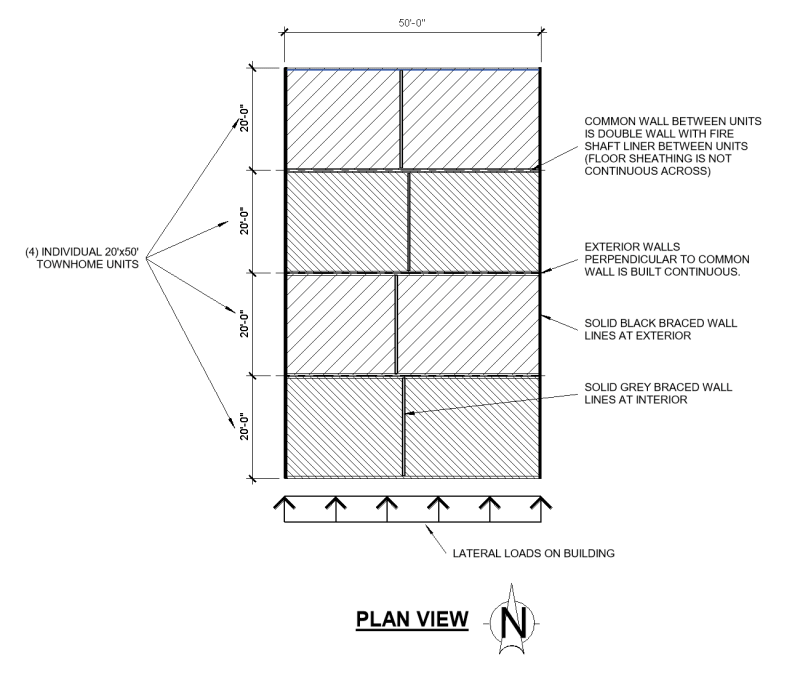I'm working on IRC townhomes and trying to implement IRC braced wall line methods for checking lateral. I'm not a pro with the braced wall line methodology, and I'm coming across some nuances with how townhomes/rowhomes are built that relates back to lateral resistance.
Refer to example plan view below. Assume we have (4) rowhomes stacked back-to-back. There is a fire separation/common wall between each unit, so the diaphragms are technically discontinuous. You can however tie the exterior walls that are perpendicular to the common wall together, and drag load from one unit to the other at those edges (at least in the jurisdiction I'm working in you can). Is it acceptable to assume interior braced wall lines of these units in this plan N/S loading direction can also share load and be designed like one large single family home for braced wall line requirements?
Not sure if anyone is implementing IRC braced wall line methodology for townhomes like this and has any insight.

Refer to example plan view below. Assume we have (4) rowhomes stacked back-to-back. There is a fire separation/common wall between each unit, so the diaphragms are technically discontinuous. You can however tie the exterior walls that are perpendicular to the common wall together, and drag load from one unit to the other at those edges (at least in the jurisdiction I'm working in you can). Is it acceptable to assume interior braced wall lines of these units in this plan N/S loading direction can also share load and be designed like one large single family home for braced wall line requirements?
Not sure if anyone is implementing IRC braced wall line methodology for townhomes like this and has any insight.


